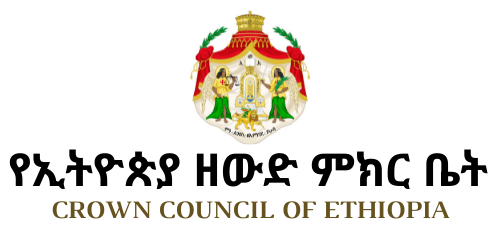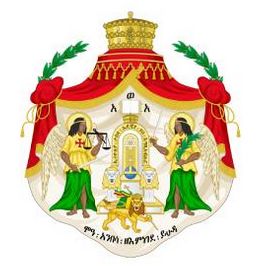INTRODUCTION
Distinguished members of the Order of Saint Lazarus. It is a pleasure to be with you today and to offer a few remarks on an issue in which we all share a common interest – water availability on the African continent.
Africa’s water resources are scattered throughout the continent, with some areas receiving more than enough water, and others experiencing virtually constant drought. The Horn of Africa and the Namibian Desert, for example, receive almost no rainfall, but the western region of the continent near the equator, receives as much as 158 inches of rainfall annually. Consequently, regional droughts on the African continent lasting up to 5 years are a common and historic problem.
For the vast majority of Africans, 75% of the population, ground water is the primary water source –that is, ponds, pools, creeks, streams and rivers etc. Yet ground water is not always available and accounts for only 15% of the continent’s water resources. As noted earlier, there are also serious concerns about the quality of the groundwater.
A term in common use among water professionals, governmental and otherwise, is “Water Stress”. It is useful to think of “Water Stress” as being the collective symptoms of a lack of water supply – the disease itself. Water stress occurs when water supply is inadequate, and reveals itself in the human, environmental, social and economic costs of unmet water needs. Lack of water and proper sanitation has crucial and far-reaching social implications. Women and children spend several hours each day fetching water.
The time spent in this activity could be used to care for children in the home, rest, or employment in income generating activities. For girls, the task of carrying water combined with lack of sanitary facilities in schools often stands in the way of their education, and traveling long hours to remote sources exposes girls to increased rates of abduction and rape. Not much imagination is required to envision the downwardly spiraling health consequences for the bone development of a young child burdened with a daily routine of multi-mile treks hauling 40 pound water-filed containers.
Lack of water supply is most frequently caused by drought, contamination, or a disruption of some sort in the channel of water distribution. A direct consequence of Africa’s ever-present lack of effective water supply, and the consequent water stress, is that Africa has been unable to effectively develop its rich natural resources – the most valuable of course, being its own people. Though approximately 4 trillion cubic meters of water are estimated to be available every year, only about 4% of that is used.
Lack of water access is a larger problem in Africa than anywhere else on the planet. Of the 25 nations in the world with the greatest percentage of people lacking access to safe drinking water, 19 are in Africa. About 328-million of Africa’s 964-million have no access to clean water and sanitation.
Simply put, the continent and its people lack the technical knowledge and financial resources needed to access and harness their water supplies. Sustainable financing for scaling up infrastructure and service delivery in Africa remains a key challenge.
WATER CONFLICT
The UN Development Programme (UNDP) has previously predicted that the main conflicts in Africa during the next 25 years might be over water, as countries fight for access to scarce resources. Potential ‘water wars’ are likely in areas where rivers and lakes are shared by more than one country, according to the UN report, with possible “flashpoints” being the Nile, Niger, Volta and Zambezi basins.
With water issues, history matters as Mark Giordano of the International Water Management Institute notes. “When colonial boundaries were drawn, residents were separated from resources, especially water. With the manifestation of colonialism emerged the concept of the nation-state, and national boundaries were arbitrarily drawn creating transboundary waters as a byproduct. For example, the Niger basin became transboundary in the colonial period because both the French and British empires shared the water resources, whereas the Senegal river basin was solely under French colonial rule until Guinea gained independence in 1958, which internationalized access to the Senegal river basin.”
Giordano believes that transboundary water laws contribute to a history of conflict and resolution in sub-Saharan Africa; “There are still agreements in place which emanated from earlier governments (colonial or minority rule),” he says, “which could be argued to exacerbate tensions between states.” Possible examples of agreements that might be argued to have fostered later conflict to include those in the Nile Basin (1929 and 1959) and between South Africa and Lesotho (1986). The 1959 Nile Basin agreement preserved British colonial interests in Sudan after Egyptian independence in 1922 and declaration of the Egyptian Republic in 1953, but Egypt and Sudan are the only actors with power in the allocation of Nile resources. The agreement neglects the role of Ethiopia, Tanzania, Uganda, and Rwanda in the governance of transboundary Nile resources.
Successful transboundary water laws have historically been multilateral and focus on joint management and development of resources. Bilateral agreements—such as those in the Nile, Orange, and Inkomati river basins—have proved to be less effective solutions because they focus on water allocation and how to divide limited flows. Allocation is a process of dividing water supplies as opposed to developing and maintaining sustainable water resources for future use. Historically, multilateral agreements further development of sustainable water resources: Such laws govern the Lake Chad, Niger, Okavango, Senegal, and Volta basins and include most or all riparian states (of, on, or relating to the banks of a natural course of water) with the intention of promoting economic development through investment to reduce economic water scarcity.
EGYPT, ETHIOPIA, SUDAN
The combined population of the three countries through which the Nile runs – Ethiopia, Sudan and Egypt – are predicted to rise from 150 millions today to 340 millions in 2050. If such a population increase is realized, there could be intense competition for increasingly limited water resources.
Indeed, water is already a catalyst for regional conflict, with strained diplomatic relations between Egypt and Ethiopia over Ethiopia’s dam building projects. Ethiopia accounts for fully 85% of the Nile river flow and the Ethiopian government has constructed dams for hydro electric power and commercial exploitation.
There is also another potential for water based conflict in Southern Africa involving Botswana, Namibia and Angola. The River Cuito which begins in Angola before heading through the Caprivi strip in Namibia and ending in the marshlands of the Okavango Delta in Botswana runs through an area that is no stranger to tensions and conflict between neighbours.
ETHIOPIA
We are sad to inform you that Ethiopia ranks among the lowest nations on Earth in access to water and sanitation. Government statistics indicate that only 31 per cent of households have access to safe water, and a meager 18 per cent of households have access to sanitation facilities.
The quality of water is a key problem, as evidenced by frequent outbreaks of water related epidemics in both rural and urban areas. Contamination of water supplies by cattle dung and human excreta is common and high fluoride levels in water are a particular problem in Our country’s Rift Valley regions. Primary health issues from Our country’s unrelenting water stress results in increased susceptibility to water-borne diseases such as diarrhea and dysentery, water-washed diseases such as trachoma and scabies, water-based diseases such as schistosomiasis, and water-related insect vectors including malaria. In Ethiopia, fully three-quarters of all health problems of children and communicable diseases, originate from the environment.
WHAT TO DO?
While the financial requirements are obvious, increasing access to quality water is a long-term, systemic goal that requires more than charitable funding. Here are a few observations:
- Better donor emphasis and recognition of the systemic nature (and infrastructure implications) of water source development is crucial. Management of the water facility and community involvement and awareness are absolute and continuing necessities. For example, We were recently discouraged to read that 50,000 new African wells have become inoperable due to a mélange of social, technical and economic problems.
- We must also recognize and become sensitive to the fact that relatively arcane and far-ranging global environmental issues are upstaging Africa-specific issues of water development.
- Within those transnational “Water Basins” that We have earlier mentioned, where water conflict could occur, direct, governmental trust building and diplomatic efforts to develop water treaty arrangements are absolutely crucial. In every instance, the national and human tragedy of open conflict and warfare is to be despised and avoided. Transnational water treaties are crucial to this purpose and there is some encouraging history that water agreements have cultivated international cooperation and lessened the opportunities for conflict.
- Due to sub-Saharan Africa’s extreme climate variability, a substantial water storage capacity must be developed. While there is some debate concerning the efficacy of regional dams, and an attendant concern for the trans-regional political sensibilities that We have earlier discussed, these matters must be rigorously engaged, explored, the truth discovered and the most immediate, reasonable and logical steps taken.
- Water soil and agriculture are intimately related. The collection of water in shallow wells, drip irrigation for crops, the use of pumps, and other technological innovations show promise for small-scale agricultural improvements and reducing water stress. Ninety-six percent of agriculture in Africa is rain-fed, but soil nutrient depletion is a more pressing problem than drought in sub-Saharan Africa. Development of soil nutrients as opposed to only allocation of water resources to supply agricultural production is the most effective means to relieve agricultural water stress in the long-term.
In closing, We wish to thank you for your warm and generous hospitality and your kind and continuing interest and attention.
May God bless The Order, Ethiopia and Africa. HIH Prince Ermias Sahle-Selassie Haile-Selassie Chairman – The Crown Council of Ethiopia








